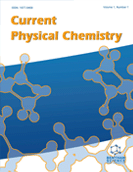Abstract
Introduction: Deacetylation of cellulose acetate restores hydroxyl groups on the surface of fibers and improves hydrophilicity. From an environmental point of view, the conventional deacetylation process involves alkalinity and large effluent volume. The goal of this work is to introduce a new ecofriendly bio-treatment process.
Methods: In this study, cellulose acetate fabrics were bio-treated with laccase enzyme. Then, the untreated and bio-treated fabrics were dyed with direct and disperse dyes. Laccase pretreatment improved color strength (16%) and crocking durability. After bio-treatment, the bending rigidity decreased for the warp (17.8) and weft (10.8) directions. The Freundlich model was the best model to describe the adsorption of direct dye onto the untreated fabric. In contrast, the Langmuir model better described the adsorption behavior of bio-treated fabric.
Results: Nernst model was suitable for disperse dyes adsorption. The partition coefficient was increased after laccase treatment. Thermodynamic analysis showed that the dye sorption was endothermic and nonspontaneous.
Conclusion: It was also found that bio-treated fabrics require less external energy. All performed experiments approved the efficiency of the deacetylation process, which led to an improvement in dyeing properties.
Graphical Abstract
[http://dx.doi.org/10.3109/10242422.2011.638713]
[http://dx.doi.org/10.1002/masy.200850210]
[http://dx.doi.org/10.1016/j.jcis.2010.09.015] [PMID: 20932537]
[http://dx.doi.org/10.1155/2017/3125413]
[http://dx.doi.org/10.1002/polb.10261]
[http://dx.doi.org/10.1021/bm0496413] [PMID: 15638515]
[http://dx.doi.org/10.1002/app.13551]
[http://dx.doi.org/10.15406/jteft.2019.05.00179]
[http://dx.doi.org/10.1016/j.copbio.2003.09.010] [PMID: 14662385]
[http://dx.doi.org/10.1016/j.tibtech.2007.10.003] [PMID: 18037176]
[http://dx.doi.org/10.1002/btpr.364] [PMID: 20014432]
[http://dx.doi.org/10.3390/catal7100287]
[http://dx.doi.org/10.1021/la701913q] [PMID: 17949116]
[http://dx.doi.org/10.1016/S1389-1723(01)80008-6] [PMID: 16232879]
[http://dx.doi.org/10.2174/2405520413666200207114627]
[http://dx.doi.org/10.1007/s002530051373] [PMID: 10091317]
[http://dx.doi.org/10.2174/2405520412666190618144005]
[http://dx.doi.org/10.1016/j.reactfunctpolym.2015.10.004]
[http://dx.doi.org/10.1016/S0003-9861(02)00331-4] [PMID: 12176056]
[http://dx.doi.org/10.3390/catal11010026]
[http://dx.doi.org/10.1007/s10924-010-0258-0]
[http://dx.doi.org/10.1177/004051754701700905]
[http://dx.doi.org/10.1002/mame.200300100]
[http://dx.doi.org/10.2174/187220808783330965] [PMID: 19075849]
[http://dx.doi.org/10.1016/S0958-1669(02)00328-2] [PMID: 12323357]
[http://dx.doi.org/10.1016/S0141-3910(02)00197-0]
[http://dx.doi.org/10.2174/2405520412666190731120559]
[http://dx.doi.org/10.1080/00021369.1988.10868966]
[http://dx.doi.org/10.1080/00405000.2013.842290]
[http://dx.doi.org/10.4061/2011/217861]
[http://dx.doi.org/10.2174/2405520412666191019101828]
[http://dx.doi.org/10.1002/jctb.2221]
[http://dx.doi.org/10.1177/155892501200702S05]
[http://dx.doi.org/10.3390/polym11030411] [PMID: 30960395]
[http://dx.doi.org/10.1007/s12221-010-0989-5]
[http://dx.doi.org/10.1111/j.1478-4408.2012.00393.x]
[http://dx.doi.org/10.2174/2210681209666190412141442]
[http://dx.doi.org/10.1016/j.biortech.2021.126081] [PMID: 34610424]
[http://dx.doi.org/10.1016/j.jcis.2004.08.078] [PMID: 15533404]
[http://dx.doi.org/10.1016/j.seppur.2007.10.002]
[http://dx.doi.org/10.1016/S0143-7208(02)00025-6]
[http://dx.doi.org/10.1080/02726351.2015.1089962]
[http://dx.doi.org/10.1260/026361709788921632]
[http://dx.doi.org/10.13005/ojc/330657]
[http://dx.doi.org/10.19044/esj.2017.v13n18p355]
[http://dx.doi.org/10.1016/j.jwpe.2022.102802]
[http://dx.doi.org/10.1016/j.jcis.2004.07.035] [PMID: 15476772]
[http://dx.doi.org/10.1016/j.jhazmat.2007.08.070] [PMID: 17919814]
[http://dx.doi.org/10.17795/jhealthscope-12492]
[http://dx.doi.org/10.2478/aut-2019-0080]
[http://dx.doi.org/10.1016/j.dyepig.2017.11.039]
[http://dx.doi.org/10.1016/j.apgeochem.2006.09.010]
[http://dx.doi.org/10.1016/j.jhazmat.2006.09.083] [PMID: 17081687]
[http://dx.doi.org/10.2478/aut-2019-0082]
[http://dx.doi.org/10.2478/aut-2019-0081]

















